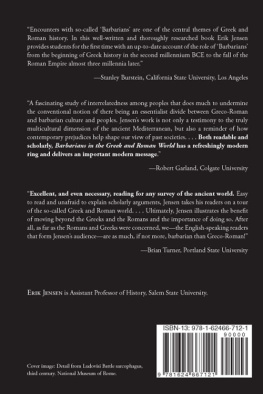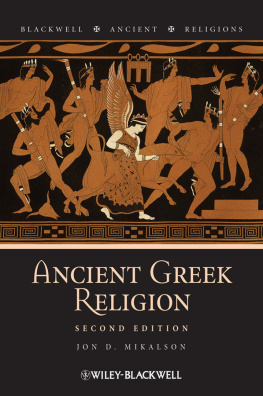Skydsgaard Jens Erik - Ancient Greek agriculture: an introduction
Here you can read online Skydsgaard Jens Erik - Ancient Greek agriculture: an introduction full text of the book (entire story) in english for free. Download pdf and epub, get meaning, cover and reviews about this ebook. City: London;New York;Greece, year: 2003, publisher: Taylor & Francis (CAM);Routledge, genre: Romance novel. Description of the work, (preface) as well as reviews are available. Best literature library LitArk.com created for fans of good reading and offers a wide selection of genres:
Romance novel
Science fiction
Adventure
Detective
Science
History
Home and family
Prose
Art
Politics
Computer
Non-fiction
Religion
Business
Children
Humor
Choose a favorite category and find really read worthwhile books. Enjoy immersion in the world of imagination, feel the emotions of the characters or learn something new for yourself, make an fascinating discovery.
- Book:Ancient Greek agriculture: an introduction
- Author:
- Publisher:Taylor & Francis (CAM);Routledge
- Genre:
- Year:2003
- City:London;New York;Greece
- Rating:5 / 5
- Favourites:Add to favourites
- Your mark:
- 100
- 1
- 2
- 3
- 4
- 5
Ancient Greek agriculture: an introduction: summary, description and annotation
We offer to read an annotation, description, summary or preface (depends on what the author of the book "Ancient Greek agriculture: an introduction" wrote himself). If you haven't found the necessary information about the book — write in the comments, we will try to find it.
Ancient Greek agriculture: an introduction — read online for free the complete book (whole text) full work
Below is the text of the book, divided by pages. System saving the place of the last page read, allows you to conveniently read the book "Ancient Greek agriculture: an introduction" online for free, without having to search again every time where you left off. Put a bookmark, and you can go to the page where you finished reading at any time.
Font size:
Interval:
Bookmark:

ANCIENT GREEK AGRICULTURE
ANCIENT GREEK AGRICULTURE
An introduction
Signe Isager
and
Jens Erik Skydsgaard

First published 1992
Paperback edition first published 1995
by Routledge
11 New Fetter Lane, London EC4P 4EE
Transferred to Digital Printing 2003
Simultaneously published in the USA and Canada
by Routledge
29 West 35th Street, New York, NY 10001
1992, 1995 Signe Isager and Jens Erik Skydsgaard
Typeset in 10 on 12 point Garamond
by Florencetype Ltd, Weston-super-Mare
All rights reserved. No part of this book may be reprinted or reproduced or utilized in any form or by any electronic, mechanical, or other means, now known or hereafter invented, including photocopying and recording, or in any information storage or retrieval system, without permission in writing from the publishers.
British Library Cataloguing in Publication Data
Isager, Signe
Ancient Greek agriculture.
I. Title II. Skydsgaard, Jens Erik
630.932
Library of Congress Cataloging in Publication Data
Isager, Signe.
Ancient Greek agriculture: an introduction / Signe Isager and Jens Erik Skydsgaard
p. cm.
Includes bibliographical references and index.
1. AgricultureGreeceHistory. I. Skydsgaard, Jens Erik.
II. Title.
S429.173 1992
338.10938dc20
ISBN 0-415-00164-1
0-415-11671-6 (pbk)
CONTENTS
LIST OF PLATES AND FIGURES
Illustrations indicated with (S) are provided by Skydsgaard, the others are supplied by the respective museums. We should like to thank the authorities for permitting reproduction.
Plates
Figures
PREFACE
The concept of this book originated some years ago in a Scandinavian symposium on Ancient History. It was obvious that agriculture played an important role in the history of ancient Greece and that there was need of a textbook that could serve as an introduction. Discussions with colleagues have supported the authors in their pursuit of the task and now, with some delay caused by the very disparate work of university teachers, the book is finished.
During our studies we have seen the interest of ancient agriculture grow, resulting in a nearly overwhelming flow of articles and books. Neither of us can say with Cassius Dio (1.1) that I have read almost everything that has been written by anybody but we can confirm that we have not included all in the treatise. Selection is difficult and we have decided to concentrate on Greek agriculture of the city-states, that is, from Homer to Aristotle and Theophrastus. The task has been divided. Skydsgaard undertook to write the first, more technical, part whereas Isager has written the latter parts, on the relationship between agriculture on one side and state and gods respectively on the other. We have, nevertheless, collaborated step by step, discussing most of the topics several times. Each of us is therefore responsible for the entire book.
We should like to thank our universities for granting terms free from teaching from time to time. The Carlsberg Foundation and Churchill College, Cambridge, granted Skydsgaard a sabbatical term in Cambridge which was very fruitful, not least because of the hospitality and interest of the colleagues there, including that of the late Moses I. Finley, who kindly encouraged the studies. We also spent a week in Methana as the guests of Lin Foxhall and Hamish Forbes, discussing various aspects of agriculture there, and should like to thank them very much for their hospitality.
The Danish Research Council has kindly given a grant for the translation of the Danish manuscript, and we owe much to Professor Jrrgen Lsse for his translation of the often difficult and technical text. Last, but not least, we should like to extend our thanks to colleagues here and abroad, including our students, who have all willingly discussed several details of ancient agriculture with us over the last decade.
Note to the 1995 edition: Since this book was first put into print, some important books have been published. We would like to mention the following titles:
Alison Burford, Land and Labor in the Greek World, Johns Hopkins University Press, 1993.
Thomas W. Gallant, Risk and Survival in Ancient Greece, Polity Press, 1991.
R. Sallares, The Ecology of Ancient Greece, Duckworth, 1991.
No references to the views of these books will be found in the notes. The text has not been altered except for a few minor amendments.
Signe Isager
University of Odense
Jens Erik Skydsgaard
University of Copenhagen
Part I
THE ART OF AGRICULTURE
INTRODUCTION
On ninsistera pas ici sur les aspects proprement agricoles (cultures et techniques) de la vie rurale: cela est banal et expos partout. Thus Edouard Will in his outstanding history of Greece, Le Monde grec et LOrient (1972). The authors of the present volume have, however, encountered some difficulty in finding the numerous treatises or textbooks on ancient Greek agriculture that Will seems to presuppose. Considering that, today, interest is generally concentrated on agriculture as the most important occupation in a pre-industrial society, we might have expected an increased interest in this occupation, but most authors (such as, for instance, Will) are satisfied with devoting a few, albeit brilliant, pages to the subject. However, agriculture is a complex phenomenon, in history as well as the present day. It requires an intimate knowledge of the natural possibilities and limitations set by climate and soil, and it presupposes the command of a technology that is often very complicated. If, as an industry, agriculture aims at something more than sustaining life within the framework of a family, its production must be viewed in its relation to the needs of the entire community and the economic system. Agriculture is a basic industry, but it does not exist independently, removed from the general norms of the society. It may be argued that from the time when man first began to cultivate the land, agriculture was one of the leading factors in the social structure, primarily because of the status attributed to the land in its various relations to those who worked it. Who owns the land, how is ownership transferred from one person to another, what is the relation between the person who owns the land and the person who works it? A whole series of questions of this nature may be asked, but needless to say not all of them can be answered. Finally, there is the question of cultivation itself: what was cultivated, and how? Here, historians will often find themselves in a difficult situation cultivated plants may have changed in their essential features over the many centuries separating the present time from ancient Greece. Even in primitive agriculture selection takes place in the reproduction of plants, and it may be exceedingly difficult to envisage the ancient types of grain, let alone undertake quantitative calculations of the yield. Historians may often feel hampered because their
A different approach would be to study contemporary Greek agriculture, and to try and make deductions back to antiquity. We find ourselves in the fortunate situation that geographers as well as social anthropologists have taken an interest in the comparatively backward Greek countryside. This is due particularly to political conditions in modern Greece. After the Second World War and the Greek Civil War substantial amounts of capital, primarily American, were invested in order to put Greece back on her feet; it had It remains to consider another interesting contribution from historical geography:
Next pageFont size:
Interval:
Bookmark:
Similar books «Ancient Greek agriculture: an introduction»
Look at similar books to Ancient Greek agriculture: an introduction. We have selected literature similar in name and meaning in the hope of providing readers with more options to find new, interesting, not yet read works.
Discussion, reviews of the book Ancient Greek agriculture: an introduction and just readers' own opinions. Leave your comments, write what you think about the work, its meaning or the main characters. Specify what exactly you liked and what you didn't like, and why you think so.

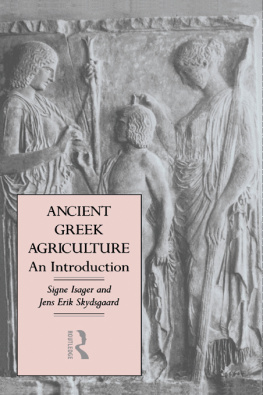

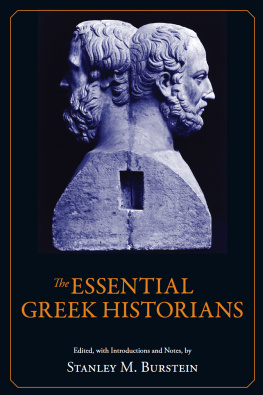

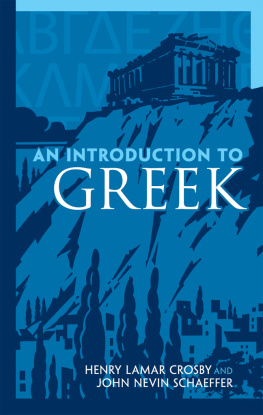

![Jens Gustedt [Jens Gustedt] - Modern C](/uploads/posts/book/146099/thumbs/jens-gustedt-jens-gustedt-modern-c.jpg)
